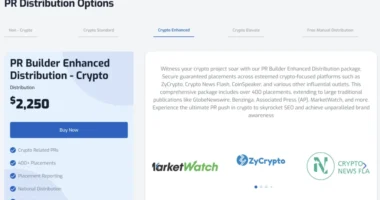A $175 price target holds firm as analysts dig deeper into profitability concerns that spooked cloud infrastructure investors.
The cloud computing infrastructure space faces mounting questions about profitability, but CoreWeave’s approach tells a different story. Rineplex’s lead finance expert explores why the company’s business model stands apart from traditional cloud providers struggling with GPU economics.
The Profitability Question Gets Serious
CoreWeave received an Outperform rating reaffirmation on October 8 with a $175 price target maintained. The timing matters because investor concerns about profitability in GPU cloud businesses had just intensified. Recent reports highlighted low profitability in competing GPU cloud operations.
The analyst response focused on unit economics and why CoreWeave’s model differs fundamentally from competitors. The firm called the profitability model strong based on durable contracts, Nvidia backing, and long-term GPU demand. These aren’t vague assurances but specific structural advantages.
Multi-Year Contracts Change Everything
CoreWeave operates on multi-year take-or-pay contracts that average four years in duration. More recent deals have been trending higher, with many stretching to five years or longer. These aren’t standard cloud service agreements where customers can scale down or walk away.
Take-or-pay structures mean customers commit to paying for capacity whether they use it or not. This eliminates the utilization risk that plagues traditional cloud providers. The revenue becomes predictable and locked in before the first GPU gets deployed.
Built-to-Suit vs. Speculative Capacity
CoreWeave doesn’t build capacity on speculation, hoping customers will show up later. The company develops infrastructure only after customer contracts are signed. This approach flips the traditional data center build-out model on its head.
Customers typically provide prepayments equating to 15-25% of the total contract value to fund initial capital requirements. These prepayments cover GPUs and data center capacity before the company spends its own capital. The result is that 98% of revenue comes from reserved capacity.
The Nvidia Safety Net
CoreWeave holds a Master Service Agreement with Nvidia that provides a critical backstop. If the company ends up with unutilized capacity for any reason, Nvidia is obligated to purchase the residual unsold capacity through April 2032. This arrangement essentially guarantees capacity utilization.
The Nvidia relationship goes beyond just a purchase commitment. It signals confidence in CoreWeave’s approach and provides indirect validation of the business model. Technology providers don’t typically commit to such arrangements unless they see strategic value.
The AI Training Demand Profile
AI model training creates a different demand pattern than traditional cloud workloads. Companies need sustained access to large GPU clusters for extended periods rather than spinning up resources for hours or days. This usage pattern aligns perfectly with multi-year reserved capacity contracts.
Training large language models or other foundation models can take weeks or months of continuous compute time. The scale of these projects means companies need certainty about capacity availability and pricing. Spot pricing or usage-based models introduce too much uncertainty.
What Sets CoreWeave Apart
Three structural elements create distance from competitors struggling with GPU cloud economics. The built-to-suit model eliminates speculative build risk. Multi-year contracts lock in revenue before capital deployment. The Nvidia backstop provides a floor on utilization risk.
Traditional cloud providers trying to add GPU services to their existing infrastructure face the opposite situation. They build capacity, hoping to fill it and rely on usage-based pricing that fluctuates. The economics work in different directions for each approach.
Market Concerns Miss the Model
Recent profitability concerns about GPU cloud services painted the sector with a broad brush. Investors worried that capital intensity made the business model unsustainable at scale. These concerns made sense for providers following traditional cloud approaches, but missed CoreWeave’s different structure.
The $175 price target reflects conviction that the profitability model holds up under scrutiny. The analyst laid out specific reasons why unit economics work rather than offering vague assurances. The stock traded up 3.86% following the rating reaffirmation.
What Investors Should Watch
Contract renewal rates will tell the real story over the next few years. If customers renew at similar or higher rates, it validates that the services meet needs at acceptable prices. Expanding contract durations would strengthen the already solid business model.
The Nvidia relationship deserves ongoing attention as well. Changes to the capacity backstop agreement or new strategic partnerships could signal shifts in competitive positioning. CoreWeave’s ability to maintain strong ties with GPU providers affects its capacity to serve customer demand.
Final Thoughts on Valuation
The maintained price target suggests analysts see the business model holding up despite broader sector concerns. CoreWeave’s approach creates natural moats through contract structures and strategic relationships. These advantages should persist as long as AI compute demand remains strong.
Investors need to separate CoreWeave’s specialized model from broader GPU cloud profitability concerns. The company built its business around predictable revenues and managed capital deployment. That foundation matters more than sector-wide worries about economics that may not apply equally.

